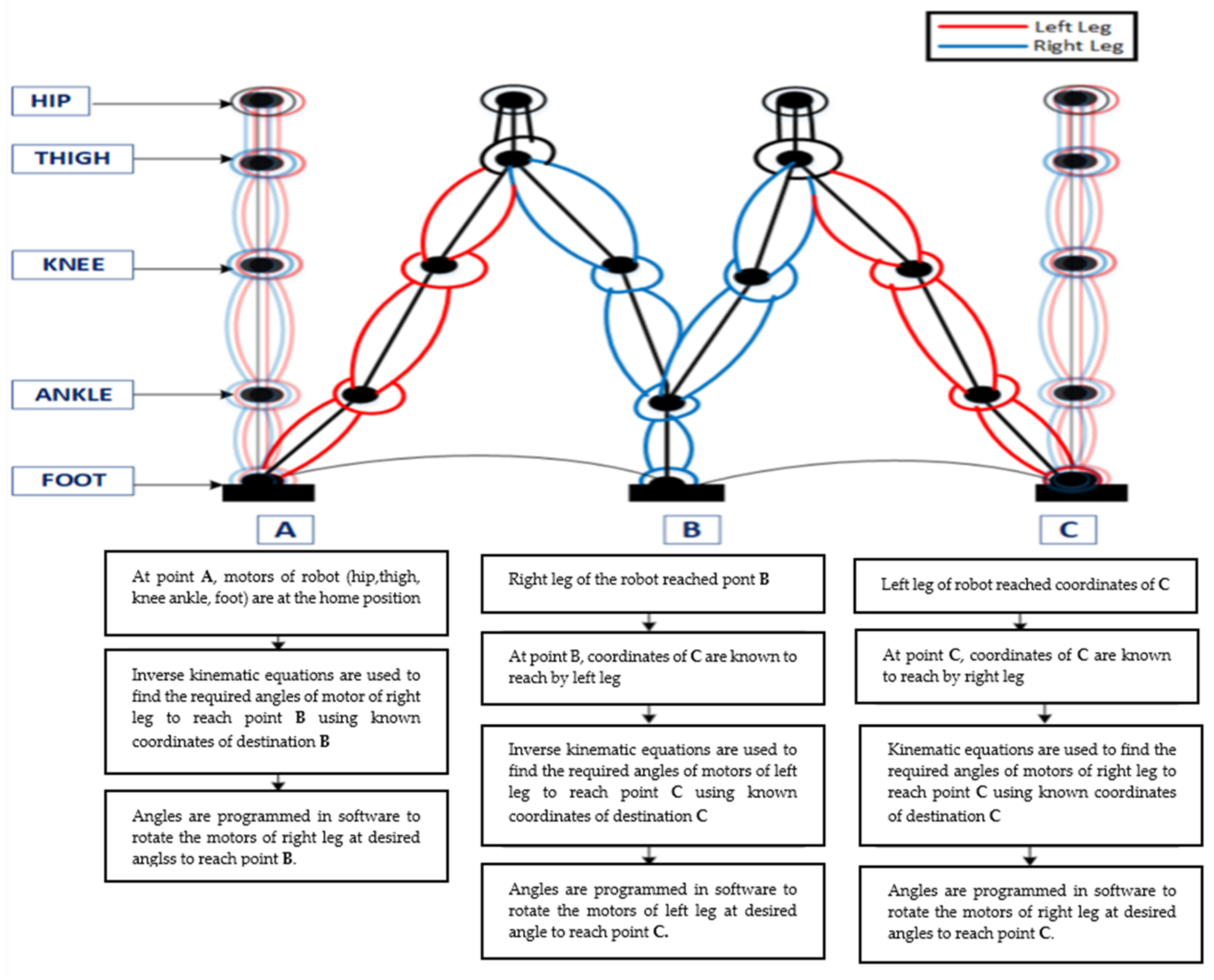Robot walking algorithms have become a crucial aspect of robotics, enabling robots to navigate and interact with their environment in a stable and efficient manner. These algorithms are designed to generate walking patterns that mimic human-like locomotion, allowing robots to move around with balance and precision. In this article, we will delve into the world of robot walking algorithms, exploring their types, applications, and challenges.

Types of Robot Walking Algorithms
There are several types of robot walking algorithms, each with its own strengths and weaknesses. Some of the most common types include:
- Static Walking Algorithm: This algorithm uses a predefined sequence of movements to generate a walking pattern. The robot’s joints are moved in a specific order to create a stable gait.
- Dynamic Walking Algorithm: This algorithm uses real-time sensors and feedback to adjust the walking pattern. The robot’s movements are adjusted based on its surroundings, allowing it to adapt to changing terrain and environments.
- Model-Based Walking Algorithm: This algorithm uses a mathematical model of the robot’s dynamics to generate a walking pattern. The model takes into account the robot’s mass, inertia, and other physical parameters to create a stable and efficient gait.
- Learning-Based Walking Algorithm: This algorithm uses machine learning techniques to learn a walking pattern from data. The robot learns to walk through trial and error, adjusting its movements based on feedback from its environment.
Applications of Robot Walking Algorithms
Robot walking algorithms have a wide range of applications in fields such as:
- Humanoid Robotics: Robot walking algorithms are used to create humanoid robots that can interact with humans in a natural way.
- Search and Rescue: Robot walking algorithms are used to create robots that can navigate through rubble and debris to search for survivors.
- Service Robotics: Robot walking algorithms are used to create robots that can assist humans in everyday tasks, such as cleaning and cooking.
- Industrial Robotics: Robot walking algorithms are used to create robots that can work in industrial environments, such as warehouses and factories.
Challenges in Robot Walking Algorithms
Despite the advancements in robot walking algorithms, there are still several challenges that need to be addressed. Some of the most significant challenges include:
- Stability and Balance: Creating a stable and balanced walking pattern is a major challenge in robot walking algorithms.
- Adaptability: Robot walking algorithms need to be adaptable to changing environments and terrain.
- Energy Efficiency: Robot walking algorithms need to be energy-efficient to prolong the robot’s battery life.
- Real-Time Processing: Robot walking algorithms require real-time processing to adjust the walking pattern based on the robot’s surroundings.
FAQs
- What is the purpose of robot walking algorithms?
Robot walking algorithms are designed to generate walking patterns that mimic human-like locomotion, allowing robots to move around with balance and precision. - What are the different types of robot walking algorithms?
There are several types of robot walking algorithms, including static walking algorithm, dynamic walking algorithm, model-based walking algorithm, and learning-based walking algorithm. - What are the applications of robot walking algorithms?
Robot walking algorithms have a wide range of applications in fields such as humanoid robotics, search and rescue, service robotics, and industrial robotics. - What are the challenges in robot walking algorithms?
The challenges in robot walking algorithms include stability and balance, adaptability, energy efficiency, and real-time processing. - How do robot walking algorithms work?
Robot walking algorithms use a combination of sensors, feedback, and mathematical models to generate a walking pattern. The algorithm adjusts the walking pattern based on the robot’s surroundings and terrain.
Conclusion
Robot walking algorithms are a crucial aspect of robotics, enabling robots to navigate and interact with their environment in a stable and efficient manner. The different types of robot walking algorithms, including static, dynamic, model-based, and learning-based algorithms, offer a range of solutions for various applications. Despite the challenges in robot walking algorithms, researchers and developers continue to advance the field, creating more efficient and adaptable algorithms. As the field of robotics continues to evolve, we can expect to see more advanced and sophisticated robot walking algorithms that will enable robots to interact with humans and their environment in a more natural and intuitive way.
In the future, we can expect to see robot walking algorithms being used in a wide range of applications, from humanoid robots that can interact with humans in a natural way, to search and rescue robots that can navigate through rubble and debris to search for survivors. The development of more advanced and sophisticated robot walking algorithms will also enable robots to work in industrial environments, such as warehouses and factories, and assist humans in everyday tasks, such as cleaning and cooking.
Overall, robot walking algorithms have the potential to revolutionize the field of robotics, enabling robots to interact with their environment in a more natural and intuitive way. As researchers and developers continue to advance the field, we can expect to see more advanced and sophisticated robot walking algorithms that will enable robots to play a more significant role in our daily lives.
Closure
Thus, we hope this article has provided valuable insights into Introduction to Robot Walking Algorithms. We hope you find this article informative and beneficial. See you in our next article!